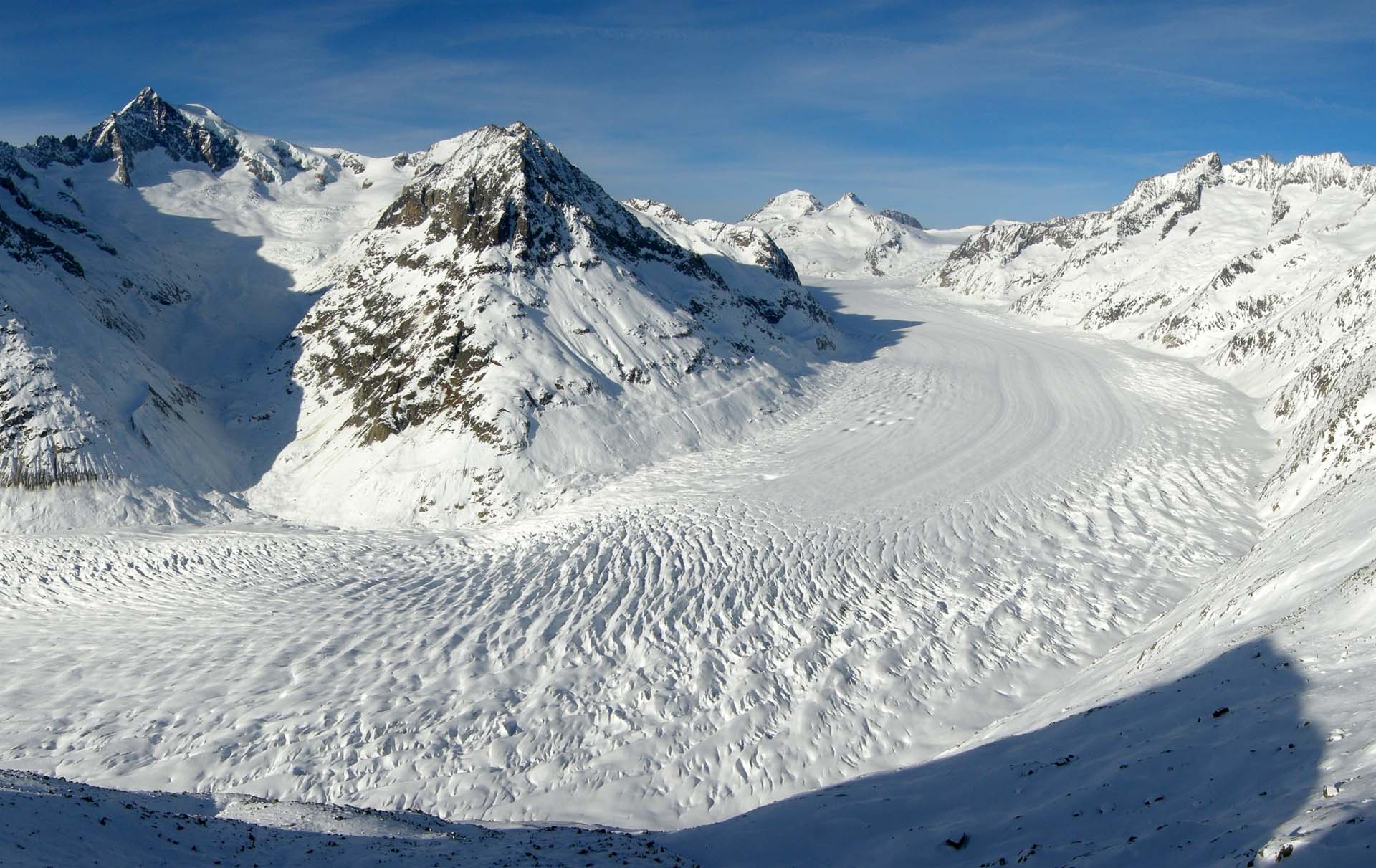Most areas of the Earth that experience snow in the winter see this snow melt to water with the coming spring. There are certain areas of the world, however, that are so cold, that the snow remains on the ground year-round. These areas are either at:
- high altitude (i.e., in mountainous areas like the Rockies)
- high latitude (i.e., Greenland or Antarctica)
In these cold areas, the snow will build up and compact over time, forming ice. Continued build-up of snow and ice will create enough pressure that the mass of ice will start to slowly flow under the influence of gravity. This mass of moving snow and ice is called a glacier.
Types of Glaciers
There are two main types of glaciers:
- Valley Glaciers: Valley glaciers are formed high in mountainous areas. They are usually seen as long rivers of ice that flow down from, or between, mountains.
- Continental Glaciers: A continental glacier is a huge mass of snow and ice that covers an extremely large land area. Today, continental glaciers cover 10% of the Earth’s land surface, and can only be found in Greenland and Antarctica.
Ice Ages
Get Your Lifejacket!
Scientists estimate that if the continental glaciers of Greenland and Antarctica were to completely melt, then sea level around the world would rise by approximately 60 meters (approximately 200 feet).Although continental glaciers are currently restricted to Greenland and Antarctica, this was not always the case in the past. Climate change throughout Earth’s history has resulted in large ice sheets covering many parts of the world that are currently ice-free. These periods of widespread ice cover are known as ice ages. Canada, for example, was almost entirely covered by thick ice sheets as little as 16,000 years ago.
- Click here to see the extent of the ice sheet covering North America 16,000 years ago.
(Further information about North America’s last ice age can be found in the unit activity for Unit A, “Investigating the Cryosphere: Analyzing Ice Cover – Past and Present”.)
Significant Glaciers
Glaciers, by their very nature, represent significant accumulations of snow and ice. As a matter of fact, glaciers represent the largest reservoir of freshwater on the Earth. The table below lists a number of significant glaciers. Click on each glacier name in order to visit it.
| Glacier | Location | Significant Feature |
| Bering Glacier | Alaska (U.S.) | The Bering Glacier is the largest (5,200 km2 / 2,008 miles2) and longest (190 km / 118 miles) glacier in North America. |
| Hubbard Glacier | Alaska (U.S.) | With a face that is 10 km (6 miles) wide, the Hubbard Glacier is the largest tidewater (i.e. emptying into an ocean) glacier in North America. |
| Athabasca Glacier | Alberta (Canada) | The Athabasca Glacier receives over half a million visitors a year making it the most visited glacier in North America. The Athabasca Glacier is part of the Columbia Icefield, the largest body of ice in the Rocky Mountains. |
| Perito Moreno Glacier | Argentina | With an area of 250 km2 (97 miles2) and a length of 30 km (19 miles), the Perito Moreno Glacier is the largest glacier in South America. |
| Vatnajökull Glacier | Iceland | The Vatnajökull Glacier has an average depth of 400 m (1,312 feet) and is the largest glacier in Europe. It covers 8% of the land surface of Iceland. |
| Siachen Glacier | India | With a length of 70 km (43 miles), the Siachen Glacier is Asia’s largest glacier. Although under the control of India, the Siachen Glacier is part of a border dispute between India and Pakistan. |


